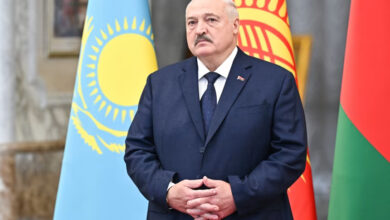One simple, three-letter word is enough to describe the Czech Republic’s capital, Prague – wow. Purple, pink, yellow, blue, orange, this city is a bouquet of colorful buildings and houses – it’s astonishing, beautiful and ravishing. For each new bud you uncover of this flower of a city, a new treasure is revealed.
Prague is one of the rare cities in which I don’t look ahead of me while walking. I can’t help but gawk at the architecture, wall moldings and decorative features that adorn the façades of each and every building. Beaming, I feel tiny among these historical edifices.
As soon as I reach Old Town Square and its side streets, my wonderment turns into a fight for survival. People are constantly pushing, shouting, and elbowing their way past me; I get hit by a tourist guide’s umbrella. I find myself squeezed between two groups of teenagers that are more into the glamorous Czech men and women than the history of the square’s astonishing astronomical clock and its hourly animated figure-show. For someone touristophobic like me (even though I love being one of them), the crowded streets of Prague are agony.
A few blocks away, I fall for the city again. As I swaddle myself in the older and quieter streets of the capital, everything is back to “normal,” and the Prague’s grandeur captures me for the rest of the afternoon.
Once I cross the Vltava River, I notice a nearby hill that might offer a panoramic view of the city. Once on top I find only locals: enjoying a beer at a beer garden, skateboarding or simply chilling. The view itself is wonderful, opening up to a 180-degree landscape.
I walk through the king’s garden that leads to the castle, which is located on a hill on the west side of the city. It is full of flowers. Only a few people are walking around and enjoying this hidden and relaxing locale. It’s also heaven for tree-lovers, offering a broad range of vegetation that isn’t easy to otherwise come by.
As I approach the castle, I am surprised not to see any massive crowds – yet. When I enter the castle, though, it’s a different story: people are everywhere. I don’t blame anyone but myself for coming here in the mid-afternoon, when crowds typically gather. Regardless, the castle does not distinguish itself much from the rest of Prague’s architecture.
What I love most about Prague is all its secret places that only its locals know about. For instance, the Czech Parliament covers up one of the city’s nicest gardens, which sports a fountain, statues and vertical agriculture. Prague streets also conceal tiny galleries that exhibit all types of art. They are usually small, making it easy to chit-chat with their owners.
After spending some time with the owner of one gallery in the Jewish area, he advises me to check out the John Lennon Wall. On my way, I cross the Charles Bridge, which is full of street vendors, singers and painters. When I arrive at the wall, I am struck by how important it feels: it birthed the concept of Lennonism, an anti-communist movement that, according to the local legend, may have inspired the Czechoslovakia’s Velvet Revolution.
As the sun sets, there is nothing easier than finding bar or a restaurant. While the food and drink quality may not be excellent, the prices are usually very low.
Prague is an easily lovable city for both tourists and tourist haters alike.




